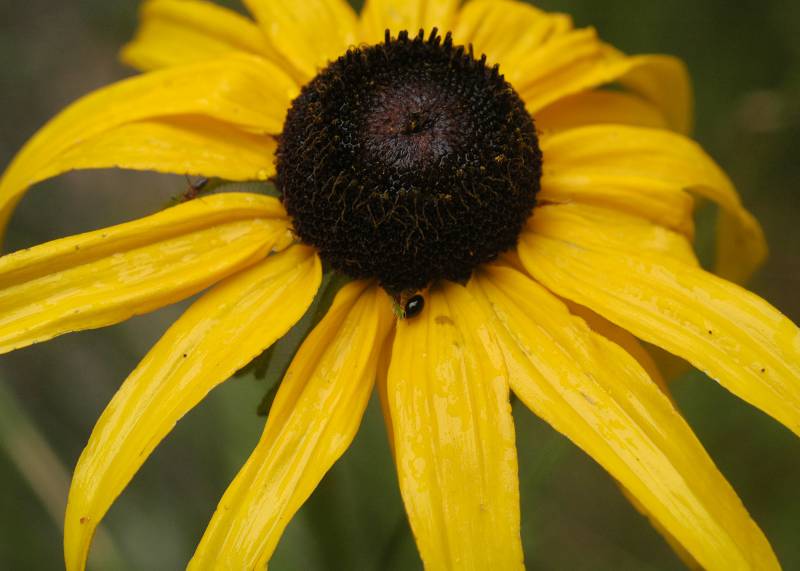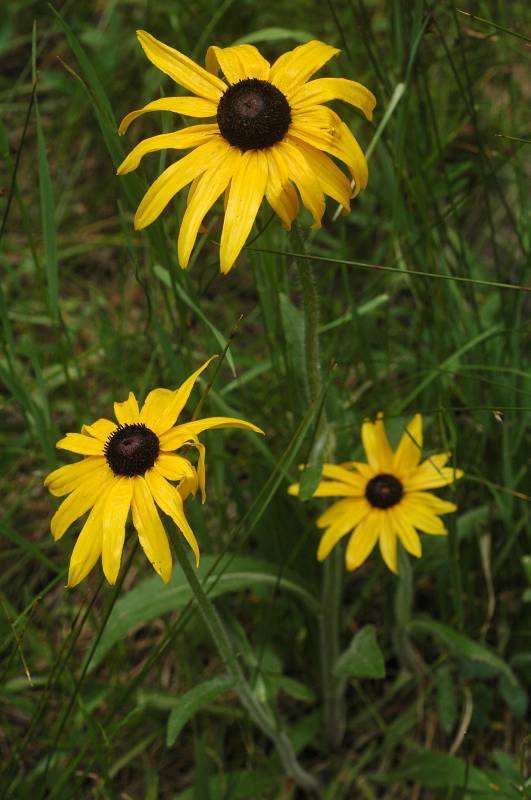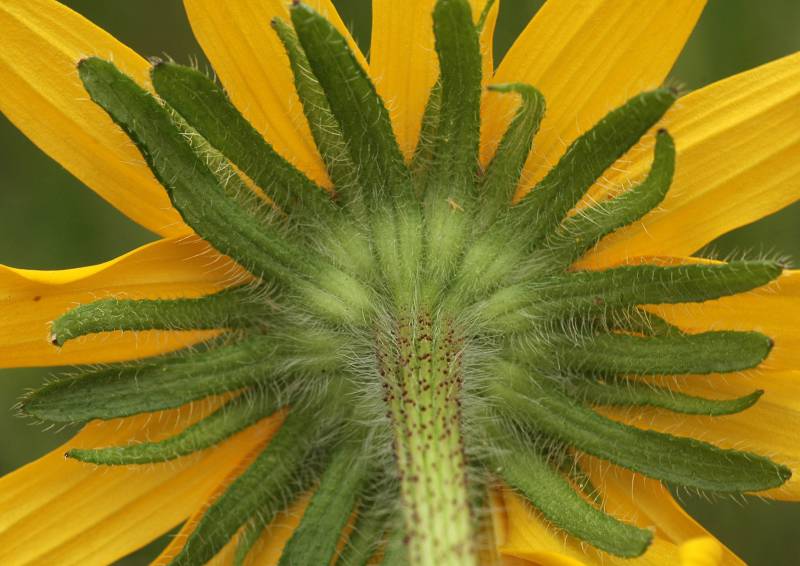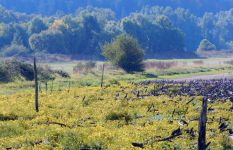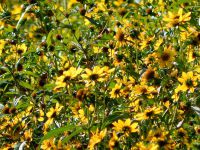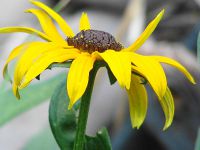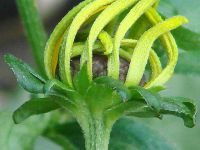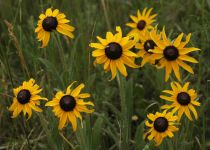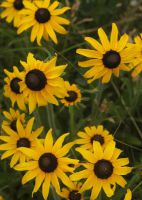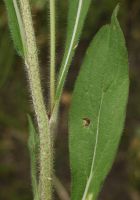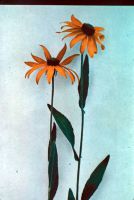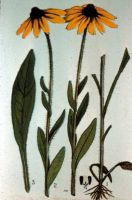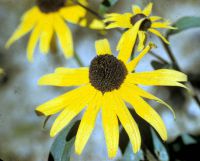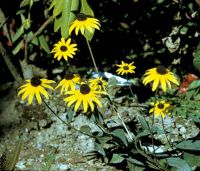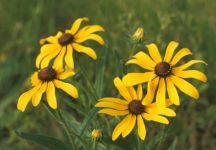Distribution: Occurring in scattered locations on both sides of the Cascades crest; British Columbia to California, east across much of the North America to the Atlantic Coast.
Habitat: Open meadows and disturbed places.
Flowers: June-August
Origin: Introduced from further east in North America
Growth Duration: Annual
Conservation Status: Not of concern
Pollination: Bees, flies, beetles, wasps
Biennial or short-lived perennial, 3-10 dm. tall, rough-hairy throughout.
Lower leaves oblanceolate to elliptic, long-petiolate, the others lance-linear to oblong, mostly sessile.
Heads long-pedunculate, the disk hemispheric, 1-2 cm. wide, dark purple or brown; involucral bracts in 2-3 series, becoming reflexed; rays 8-20, orange, neutral, 2-4 cm. long; receptacle enlarged, conic, chaffy throughout, its bracts acute and short-hairy, clasping the achenes; pappus none.
Heads long-pedunculate, the disk hemispheric, 1-2 cm. wide, dark purple or brown; involucral bracts in 2-3 series, becoming reflexed; rays 8-20, orange, neutral, 2-4 cm. long; receptacle enlarged, conic, chaffy throughout, its bracts acute and short-hairy, clasping the achenes; pappus none.
Publication: Sp. Pl. 2: 907. 1753.
-
var. pulcherrima – black-eyed Susan
 Occurring in scattered locations on both sides of the Cascades crest; British Columbia to California, east across much of the North America to the Atlantic Coast.
Occurring in scattered locations on both sides of the Cascades crest; British Columbia to California, east across much of the North America to the Atlantic Coast.
PNW Herbaria: Specimen records of Rudbeckia hirta in the Consortium of Pacific Northwest Herbaria database
WA Flora Checklist: Rudbeckia hirta checklist entry
OregonFlora: Rudbeckia hirta information
E-Flora BC: Rudbeckia hirta atlas page
CalPhotos: Rudbeckia hirta photos

